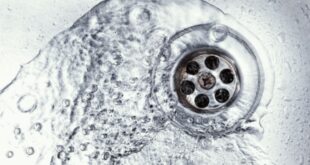On the heels of preliminary findings and an interim memorandum – both released last year – in the Lake Oroville Spillways incident, the Independent Forensic Team (IFT) released additional findings late last week from its review of the February 2017 incident. In addition to identifying the combined causes that led to the incident, the latest IFT report also comments on decisions made as the spillway incident unfolded last year.
While the Department of Water Resources (DWR) is in the process of fully reviewing IFT’s lengthy report, the department intends to incorporate the latest findings into its ongoing efforts. In May, DWR began planning for a comprehensive needs assessment of the entire Oroville complex to understand what changes, if any, need to be made long term to bolster dam safety of the Oroville complex.
“We strongly supported having an independent assessment of the spillway failure and take the findings very seriously,” said DWR Director Grant Davis. “This report is consistent with the independent team’s initial technical findings from last May which were fully incorporated in the design of the reconstructed spillways. As we have done in the past, we will carefully assess this report, share it with the entire dam safety community and incorporate the lessons learned going forward to ensure California continues to lead the nation on dam safety.”
The latest update from the IFT is part of its responsibility to determine the root cause of the Lake Oroville spillway incident as part of their February directive from the Federal Energy Regulatory Commission (FERC). The IFT is also looking at potential contributing causes for the disaster including operations, structural, geologic, and management issues. In addition to identifying the combined causes that led to the incident, the latest IFT report also comments on decisions made as the spillway incident unfolded last February.
The preliminary findings, released on May 5, 2017, listed 24 physical factors that potentially contributed to the main spillway damage and four physical factors that may have contributed to the emergency spillway damage. On September 5, 2017, the IFT published an interim memorandum summarizing its findings of the Lake Oroville spillways failure and DWR released a statement regarding the memo. The latest report from the IFT incorporates these previous findings in addition to contributing human factors.
“During the incident, our sole focus was protecting public safety,” said Joel Ledesma, Deputy Director of the State Water Project. “DWR supported this independent assessment – so we can learn from the past and continue to improve now and into the future.”
While the IFT continues its review process in Oroville, DWR has already made significant progress to bolster the dam safety program in the state to include comprehensive re-evaluations of every spillway with attributes similar to Lake Oroville’s. These reevaluations go far beyond the standard inspections to include extensive hydrologic, structural and geotechnical work and a thorough investigation of records. DWR will continue to invest in resources to learn from other dam safety programs and plans to convene experts over the coming months to digest the findings and recommendations from this report to identify tangible actions in response.
As of March 15 of last year, the DWR in consultation with the United States Society of Dams (USSD) and the Association of State Dam Safety Officials (ASDSO), the IFT members were announced and include:
Name and area of expertise
John France, team leader – Geotechnical
Hank Falvey – Hydraulics
John Trojanowski – Hydraulic Structures
lrfan Alvi – Operations/Human Factors
Steven Rigby – Operations
David K. Rogers – Engineering Geology
 California Water News Daily Your Source For Water News in California
California Water News Daily Your Source For Water News in California


